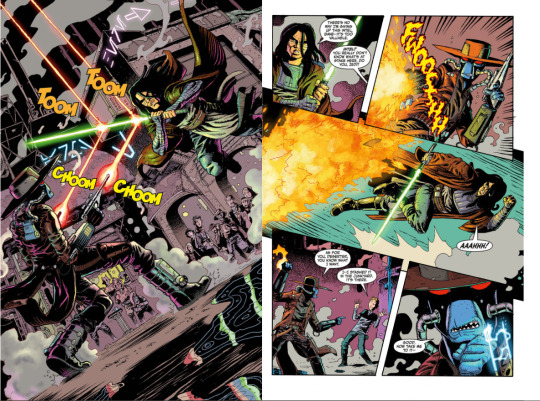#scan to cad
Explore tagged Tumblr posts
Text
Expert Scan to BIM Services in Germany | Scan to CAD | Rvtcad
Germany is a leader in advanced architectural and engineering solutions, with a growing demand for scan-to-BIM and scan-to-CAD services. These technologies help architects, engineers, and construction professionals transform real-world buildings into precise digital models. Rvtcad specializes in delivering high-quality scan-to-BIM services across Germany, ensuring accurate and efficient project execution.

What is Scan to BIM?
Scan to BIM is a process where laser scanning technology captures detailed 3D measurements of a building. These scans are then converted into accurate Building Information Models (BIM) using software like Revit. BIM models provide detailed architectural, structural, and MEP (Mechanical, Electrical, and Plumbing) information, allowing seamless planning, design, and execution of projects.
Why Choose Rvtcad for Scan to BIM Services in Germany?
Highly Accurate 3D Models: We use advanced laser scanning equipment to create precise BIM models, reducing errors and project delays.
Expertise in Revit & AutoCAD: Our team specializes in converting point cloud data into Revit models with various Levels of Development (LOD 100 to 500).
Fast and Reliable Service: We ensure quick turnaround times for as-built documentation, renovations, and new constructions.
Clash-Free Coordination: Our BIM models help in clash detection, ensuring smooth collaboration between architects, engineers, and contractors.
Customized Solutions: Whether it's a residential, commercial, or industrial project, we tailor our services to meet specific client needs.
What is Scan to CAD?
Scan to CAD converts point cloud data into 2D AutoCAD drawings, such as floor plans, elevations, and sections. This process is essential for architects, engineers, and facility managers who require accurate as-built documentation.
Our Scan to CAD Services Include:
Sections & Site Plans
Detailed As-Built Drawings
MEP & Structural Drawings
Topographic & Survey Drawings
Industries We Serve in Germany
Rvtcad provides Scan to BIM and Scan to CAD services across multiple industries, including:
Architecture & Construction
Engineering & Infrastructure
Facility Management
Historical Building Preservation
Real Estate & Renovation
Advantages of Using Scan to BIM & CAD Services
Time-Saving: Faster project planning and execution.
Cost-Effective: Reduces rework and minimizes material waste.
High Accuracy: Eliminates manual measurement errors.
Better Collaboration: Enhances teamwork among stakeholders.
Contact Rvtcad for Expert Scan to BIM & CAD Services in Germany
If you need high-quality Scan to BIM or Scan to CAD services, Rvtcad is your trusted partner. We offer precision, reliability, and efficiency to help you achieve project success. Get in touch today to discuss your project requirements!
#scan to bim#point cloud to bim#3d laser scanning#bim services#as-built drawing#bim laser scanning#scan to revit#scan to cad#as-built drawings#point cloud to cad
0 notes
Text

Scan To CAD Technology is a process that converts physical objects into precise digital 3D models using 3D scanning technology and CAD software. It captures real-world geometry, generating a point cloud, which is then transformed into an editable CAD file. This technology is widely used in engineering, manufacturing, architecture, and healthcare for reverse engineering, quality control, and prototyping. Scan-to-CAD streamlines design workflows and enhances innovation across industries by improving accuracy and efficiency.
0 notes
Text

Convert Point Cloud to DWG Services
Need to convert point cloud data to DWG format? Our expert Convert Point Cloud to DWG services make it seamless and precise. We transform your scanned 3D data into accurate, editable DWG files, ideal for CAD and BIM applications. Save time, ensure accuracy, and bring your projects to life with top-quality conversions. Contact us now and simplify your design workflow!
#convert point cloud to dwg#point cloud to dwg conversion#point cloud to dwg services#scan to cad#scan to cad services#scan to autocad services#scan to autocad conversion#scan to cad conversion
0 notes
Text
Revolutionize Projects With Laser Scanning In Construction
Laser scanning with a digital scanner is now standard practice within large and small businesses across all industries. With our advanced equipment and techniques, we can provide you with an accurate 3D model of your building or infrastructure project in record time. Our team will help you make the best decisions for future projects. 3D laser scanning in construction is a non-destructive, accurate spatial data collection method. You can use it in your construction project for lower costs, less human error, and fewer assumptions. If done correctly, 3D laser scanning may record every detail of any structure inside a specified region, including a factory, processing plant, pump station, office building, etc. For more information, visit our website.

0 notes
Text
All of Cad Bane's art from the new Star Wars: Hyperspace Stories Vol. 9 (Dark Horse comics).








Some close ups of my favs:



#Cad Bane#Hyperspace Stories#Star Wars#Star Wars Comics#quinlan vos#Bounty Hunter#Jedi#Dark Horse#Duros#my scans
85 notes
·
View notes
Text

The version with just Cad Bane because he deserves all the love in the galaxy
34 notes
·
View notes
Text
Revolutionizing Gaming with Realistic 3D City Modeling
In the ever-evolving landscape of gaming and virtual experiences, 3D city modeling stands out as a transformative innovation. By crafting hyper-realistic, interactive environments, this technology has redefined the boundaries of immersion and functionality. Here’s how 3D city modeling is making an impact and why it’s a game-changer across industries.

What makes 3D city modeling unique?
1. Real-World Precision
3D city modeling utilizes advanced Geographic Information System (GIS) data, aerial imagery, and LiDAR (Light Detection and Ranging) scans to recreate cities down to the finest details. From iconic skylines to intricate street layouts and even rooftop solar panels, these models capture unparalleled realism. Such precision is invaluable not just for gaming but also for practical applications like renewable energy optimization.
2. Interactive Exploration
Unlike static 3D visuals, these models are dynamic and interactive. Users can navigate through streets, simulate traffic patterns, or experience real-time weather changes. This level of engagement transforms how players explore virtual environments, making the experience deeply immersive.
3. Seamless Gaming Integration
By leveraging gaming engines such as Unreal Engine and Unity, 3D city models achieve lifelike responsiveness and fluid interactions. Gamers can enter buildings, engage with objects, and interact naturally with city elements — all while enjoying a seamless gaming experience.
Exciting advantages for users
1. Renewable Energy Insights
3D models aren’t just for play — they’re practical too. Simulate and visualize optimal placements for solar panels or analyze their efficiency within a cityscape. This integration of gaming and real-world insights adds an innovative dimension to the technology.
2. Immersive Realism
By incorporating photorealistic textures and precise details, these city models deliver a true-to-life feel. Gamers and users alike can experience cities as though they were physically present.
3. Dynamic Updates
Cities are always evolving, and so can the models. From new constructions to urban growth, updates can easily reflect real-world changes, ensuring users always interact with up-to-date environments.
3D city modeling extends its reach far beyond gaming. Its potential applications include:
Urban Planning: Simulate infrastructure projects and predict urban development impacts.
Education: Explore historical landmarks or teach geography with vivid, interactive visuals.
Tourism: Offer virtual tours of cultural landmarks or popular destinations.
Emergency Response: Train teams with real-world scenario simulations.
4. Collaborative Features
With multiplayer capabilities, 3D city modeling encourages teamwork and shared experiences. Whether it’s navigating a virtual cityscape or solving challenges together, collaboration becomes effortless and engaging.
Transforming vision into reality!
The possibilities with 3D city modeling are endless. Whether you’re crafting immersive gaming experiences, planning sustainable urban developments, or educating the next generation, this technology is reshaping how we interact with the world — both virtual and real.
Experience the future today. Contact us to see how our 3D city models can revolutionize your vision!
0 notes
Text
Arizona BIM Services - BIMPRO LLC
BIMPRO offers comprehensive BIM services in Arizona to elevate the design and construction projects across Arizona and the surrounding locations of Phoenix metropolitan area.

#BIM Services Arizona#Revit Drafting Services#MEP BIM Services#CAD to BIM Services#Scan to BIM Services
1 note
·
View note
Text
Top Architectural Scan to BIM Services | Accurate BIM & CAD Services
Looking for professional Architectural Scan to BIM services? We provide high-accuracy Architectural BIM Modeling and Scan to CAD services to transform point cloud data into detailed 3D models. Our expertise ensures precision, efficiency, and seamless integration into your architectural and construction projects. Whether you need BIM models for renovation, restoration, or new builds, our services guarantee high-quality results. Improve your workflow with our Scan to BIM and Scan to CAD services tailored to your needs.
#Architectural Scan to BIM#Architectural Scan to BIM services#Architectural Scan to CAD Services#Architectural BIM modeling service
0 notes
Text
0 notes
Text
Point Cloud to Bim Services | Convert Scan Data into Revit
Point Cloud to BIM (Building Information Modeling) services have become essential in the construction and renovation industry. They help convert laser-scanned data into precise 3D models, making project planning, design, and execution more efficient. This technology is widely used in architecture, engineering, and construction (AEC) to create detailed as-built models in Revit.

What is Point Cloud?
A point cloud collects millions of data points captured using 3D laser scanning technology. These points represent the physical environment of a structure or site. They contain accurate spatial details, including dimensions, textures, and elevations. This data is then processed and converted into a digital 3D model using specialized software like Autodesk Revit.
Why Convert Point Cloud Data to BIM?
Converting point cloud data to BIM offers multiple advantages:
Accuracy: Eliminates errors by providing precise measurements.
Efficiency: Reduces manual drafting time and enhances project coordination.
Cost-Effective: Prevents rework and saves costs by identifying issues early.
Visualization: Creates high-quality 3D models for better planning.
Facility Management: Helps in renovations, maintenance, and future modifications.
Steps to Convert Scan Data into Revit
The process of converting scan data into BIM involves several key steps:
1. 3D Laser Scanning
High-resolution 3D laser scanners capture the physical details of a building or site. Popular scanners include those from Faro, Leica, Trimble, and Riegl. The scan data is saved in formats like E57, RCS, RCP, and XYZ.
2. Point Cloud Registration
The scanned data is processed to align multiple scans into a single point cloud. Software like Autodesk Recap, Leica Cyclone, or Trimble RealWorks helps in registering and cleaning the raw data.
3. Importing to Revit
The registered point cloud file is imported into Autodesk Revit. The modelers use the data as a reference to create 3D BIM models, ensuring accuracy in every detail.
4. Modeling & BIM Creation
BIM experts trace the scanned data and generate 3D models with different Levels of Development (LOD 100-500). This includes architectural, structural, and MEP (Mechanical, Electrical, and Plumbing) elements.
5. Quality Check & Final Delivery
Before delivering the final model, a thorough quality check is conducted to ensure accuracy. The final output is provided in Revit, CAD, or any other required format.
Applications of Point Cloud to BIM
Point Cloud to BIM is useful in various industries:
Renovation & Restoration: Helps architects redesign historical buildings.
Construction Projects: Assists engineers in planning and execution.
Facility Management: Aids in building maintenance and modifications.
Clash Detection: Identifies potential design conflicts before construction begins.
Choosing the Right Point Cloud to BIM Service Provider
When selecting a service provider, consider the following factors:
Experience & Expertise: Look for a team skilled in using Revit and other BIM software.
Technology & Tools: Ensure they use advanced scanners and software.
Accuracy & Quality: Check their past projects and reviews for precision.
Turnaround Time: Choose a provider that delivers models within the required timeline.
Conclusion
Point Cloud to BIM services play a crucial role in modern construction and renovation projects. They provide accurate 3D models that enhance efficiency, reduce costs, and improve project outcomes. Whether for new construction, renovations, or facility management, converting scan data into Revit ensures seamless project execution. Investing in professional Point Cloud to BIM services can significantly improve project success and long-term efficiency.
#scan to bim#point cloud to bim#3d laser scanning#bim services#as-built drawing#bim laser scanning#scan to revit#scan to cad#as-built drawings#point cloud to cad
0 notes
Text
Transforming Reality into Precision: The Power of 3D Laser Scan to CAD
In the world of design, construction, and engineering, accuracy is paramount. Whether you're working on a large-scale infrastructure project or a complex architectural renovation, having precise measurements and data is essential to success. One of the most revolutionary technologies to impact these fields is 3D laser scanning. When combined with Computer-Aided Design (CAD) software, it allows for the creation of highly detailed, accurate digital models of real-world environments. This process, known as "3d Laser Scan To Cad," has transformed industries by improving efficiency, reducing errors, and enhancing collaboration.
What is 3D Laser Scanning?
3D laser scanning is a process that uses laser beams to capture a physical environment or object and convert it into a digital 3D model. The laser scanner emits laser pulses that bounce back after hitting a surface, measuring the distance to the surface with incredible precision. This data, often referred to as "point clouds," can be used to represent the exact shape and dimensions of the scanned object or environment in 3D space.
The technology is capable of capturing millions of data points per second, making it possible to document complex structures, both large and small, with unparalleled accuracy. Unlike traditional measurement methods, 3D laser scanning does not require physical contact with the object, allowing for safer and faster data collection.
The Process: From Laser Scan to CAD Model
The transition from a 3D laser scan to a usable CAD model involves several key steps:
Data Capture: A laser scanner is placed in strategic locations around the object or environment to collect data from different angles. This results in a set of point clouds that represent the scanned surfaces.
Point Cloud Registration: If multiple scans are taken, they need to be aligned and combined into a single, unified point cloud. This process, known as registration, ensures that all scan data fits together seamlessly, even when gathered from different positions.
Point Cloud Processing: The raw point cloud data may contain noise or irrelevant points that need to be cleaned up. Software tools are used to refine the data, ensuring that only the necessary information remains for further processing.
Model Creation in CAD Software: The cleaned point cloud is imported into a CAD program, such as AutoCAD, Rhino, or Revit, where it serves as a reference for creating accurate 3D models. Engineers, architects, or designers can use this reference to create detailed representations of the object or space, including dimensions, geometry, and spatial relationships.
Final Design & Integration: Once the CAD model is created, it can be modified, analyzed, and integrated into broader design plans. The model can be used for simulations, structural analysis, or visualizations, depending on the project’s requirements.
Benefits of 3D Laser Scan to CAD
The integration of 3D laser scanning with CAD software brings several advantages to a variety of industries:
Accuracy and Precision: The level of detail captured by laser scanners is far superior to traditional manual measuring techniques. This results in highly accurate CAD models that reflect real-world conditions.
Speed and Efficiency: Laser scanning is significantly faster than manual measurement, allowing for rapid data collection in a fraction of the time. This is especially beneficial for large, complex environments that would otherwise take days or weeks to measure.
Reduced Errors and Rework: With accurate data at the outset, the likelihood of errors in the design phase is minimized. As a result, costly rework due to design mistakes or inaccuracies is significantly reduced.
As-Built Documentation: In renovation or retrofit projects, 3D laser scanning provides accurate "as-built" data, which is essential for understanding the current state of a structure. This ensures that design modifications fit seamlessly with existing conditions.
Improved Collaboration: 3D models can be easily shared across teams, improving communication and
collaboration between architects, engineers, contractors, and clients. The digital models can be reviewed, annotated, and modified in real-time, streamlining the design process.
Better Decision-Making: Accurate data and detailed models provide stakeholders with a clearer understanding of the project, enabling better decision-making and more effective project management.
Applications of 3D Laser Scan to CAD
The applications of 3D laser scan to CAD are vast and varied, spanning across multiple industries:
Architecture and Construction: In both new builds and renovations, 3D laser scanning captures every detail of a structure, making it easier to create accurate blueprints and identify potential design challenges before construction begins.
Manufacturing: Manufacturers can use 3D scanning to reverse-engineer existing parts or create prototypes with precise measurements, reducing the time spent on design iterations and prototyping.
Heritage Preservation: Historical sites and monuments can be digitally preserved through 3D scanning, allowing for restoration or replication with an unprecedented level of detail and accuracy.
Aerospace and Automotive: Engineers in the aerospace and automotive sectors use 3D scanning to capture precise measurements of parts and assemblies, ensuring that designs fit together perfectly during the production process.
Civil Engineering: Large infrastructure projects, such as bridges, tunnels, and highways, benefit from 3D laser scanning to create detailed models of the existing environment, aiding in design, analysis, and construction.
Conclusion
The integration of 3d Laser Scanner To Cad technology is a game-changer for industries that rely on precise design and measurement. By transforming physical spaces into highly accurate digital models, it not only improves the efficiency and accuracy of design work but also reduces the risk of costly errors and delays. As technology continues to evolve, the combination of 3D laser scanning and CAD will only become more essential for driving innovation and precision across a wide range of industries. Whether you're designing a new building, renovating a historical landmark, or developing complex machinery, 3D Laser Scan to CAD is the future of accurate, efficient, and collaborative design.
0 notes
Text

Scan to CAD Conversion Services
Exciting news! We've revolutionized our Implementation of 3D Scan to CAD Conversion Services provider. Say goodbye to manual measurements and hello to precision and efficiency! Unlocking endless possibilities in design and engineering. Experience seamless transition from physical to digital models with our cutting-edge Architectural PDF to CAD Conversion Services in USA. Accelerate your projects with accurate data capture and streamline your design process.
0 notes
Text
The Growing Importance of BIM Services in Modern Construction
BIM (Building Information Modeling) enhances project efficiency, accuracy, and collaboration. BIM modeling services, scan to BIM services, BIM outsourcing services, and BIM clash detection services made it easier for construction people to streamline their workflow and enhance project outcomes.
Here, architects, engineers, and contractors can perceive, analyze, and optimize building designs before the construction process starts.
What Are BIM Modeling Services?
BIM modeling services are expected to encompass the detailed and 3D development of representations of building projects. The models contain all the fundamental information, such as measurements, materials, and building components, making it easier to plan and execute the construction project. It also serves as a look into the lifecycle of a building from the design to demolition stages, where stakeholders can make informed decisions at each stage.
Teams can identify problems early in the process, and collaboration between architects, engineers, and contractors is simplified, which ultimately leads to fewer costly errors.
Scan to BIM Services: Digitizing Existing Structures
Scan to BIM or Point-Cloud to BIM services involves the application of 3D laser scanning technology to collect precise data of the physical space, which is then converted into a BIM model. Such models contain all the details of an existing building in all its structural elements, walls, and its mechanical systems.
Scan to BIM services is crucial when dealing with older buildings, whose documentation may be incomplete or old. This helps designers and engineers to come up with renovation or retrofitting plans.
BIM Outsourcing Services: Access Expert Talent
To most construction firms, outsourcing is the best cost benefit to accessing expert talent without maintaining in-house resources. BIM outsourcing services allow companies to outsource tasks such as modeling, drafting, and clash detection to specialized teams. Not only does this reduce costs, but it also enables construction firms to stay focused on core business activities while experts handle technical BIM aspects.
BIM services outsourcing can also help firms honor tight deadlines, improve the quality of the project, and take on more complex projects without a rise in staff. This flexibility holds special significance for smaller firms looking to keep their position in the competitive arena of a fast-changing industry.
Role of BIM Clash Detection Services
One of the main benefits of BIM is the ability to detect conflicts in building system clashes and correct them at the design stage. Detection of "clashes" or conflicts between structural, mechanical, electrical, and plumbing systems within a BIM model, for example, is performed by advanced software in BIM clash detection services. Before construction happens, finding clashes saves project teams from costly rework and delays.
With BIM clash detection services, many of the potential conflicts can already be visualized and resolved at the planning stage, thus setting up constructions for even smoother processes and lowering the risk of project overruns.
The incorporation of BIM modeling services, scan to BIM services, BIM outsourcing services, and BIM clash detection services has, therefore, driven the change in the construction industry. Increased accuracy of projects, cost-cutting, and efficient collaboration of teams are some the result benefits that come from the incorporation of BIM technologies in the construction arena. Construction professionals can deliver quality projects on time and on budget with the use of BIM technologies.
#BIM Modeling Services#BIM Clash Detection Services#BIM outsourcing services#Scan to BIM services#cad solution#3d cad solution#indovance inc
0 notes
Text
scanned documents to cad conversion
https://3d-labs.com/paper-to-cad-conversion/ 3d-labs specializes in providing cost-effective high-precision paper to cad conversion services in India. We work on Sketches , images, or Concepts and then create exemplarily detailed , drawings in a quick manner that ensures a high level of accuracy and cost savings in converting your paper drawings. You can also have added security by creating an archive copy of your data. The drawings are redrafted in CAD using your layering standards and any other instructions and are 100% dimensionally accurate. We provide inventively and cost-effective auto cad conversion services to our esteemed clients with the quickest turnaround time. Our vision is to be the most reputable and pioneer conversion services firm globally. We convert any types of engineering drawings to your requested output. We ensure that every detail is in place and that no compromises are made with your data integrity.

0 notes
Text
3d Scan to Cad Model
The reverse engineering technique involves 3d Scan to Cad Model or scanning an existing physical thing to create a digital 3D model of it. Creating a 3D model of an organic and complicated thing requires a lot of work and is sometimes inaccurate when measuring it using traditional methods. In contrast, scanning produces millions of precise data points from an organic and complicated object at a far faster rate. After processing these data points, specialized reverse engineering tools can provide complex surfaces and primitives that can be used to create a new 3D CAD model of choice.
0 notes